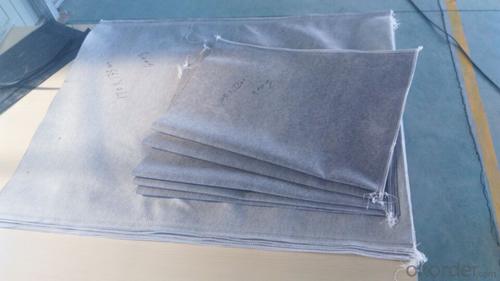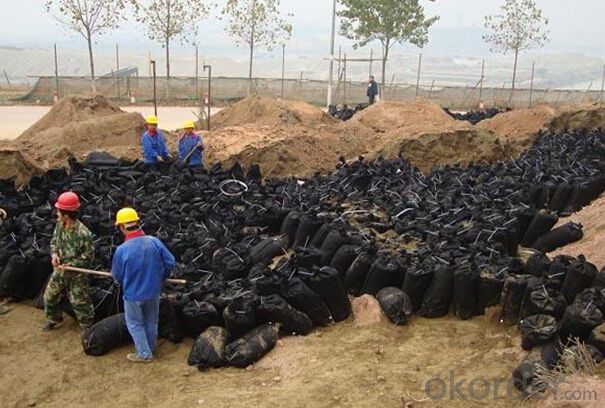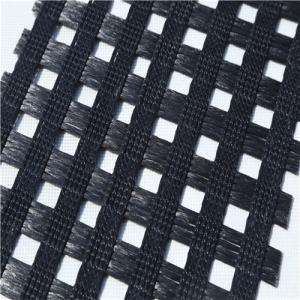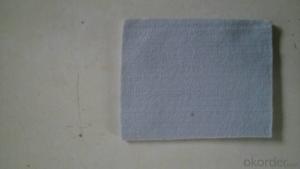Biaxial Geogrids Non Woven Geotextile Bag PET High Strength Quality
- Loading Port:
- Tianjin
- Payment Terms:
- TT OR LC
- Min Order Qty:
- 1000 m²
- Supply Capability:
- 1900000 m²/month
OKorder Service Pledge
OKorder Financial Service
You Might Also Like
Non Woven Geotextile Bag
Product Description of Non Woven Geotextile Bag PET High Strength Quality
Made by polyester (PET) or polypropylene (PP) fiber as the raw material, making double sides ironed and pressed needle-punched non-woven geotextile through the spun bonded technology, and then processed to bag with specified dimension, fill soil, sand and fertilizer etc. padding into bag according to local soil conditions and scientific proportion, and then spray seeds which are suitable for local climate, form a new product which could restore or create a new ecosystem.
Specification Non Woven Geotextile Bag PET High Strength Quality:
Greige cloth for ecological bag is 150~180 GSM, the physical dimension for ecological bag will be determined based upon the project requirement.


Property Non Woven Geotextile Bag PET High Strength Quality:
1. With the advantages of anti-UV, anti-aging, non-toxic, no combustion-supporting, bag rip no stretch;
2. Bags are soft with good integral, permeability is strong and scouring resistance, good durable performance;
3. Good plasticity and construction process is simple;
4. Strong corrosion resistance, resistance to microbes, high s oil stability, easy for plant growth;
5. Comprehensive functions of environmental protection, ecological afforestation, soil and water conservation, forming of ecological slope protection system.
Application Non Woven Geotextile Bag PET High Strength Quality:
Commonly used in barren hills, mining repair, highway and railway slope greening, riverbanks slope protection, inland waterway improvement etc. projects.
Packaging & Shipping
Items per Carton: 50 Pieces/Pack
Package Measurements: 50X45X120 cm
Gross Weight: 50.0 kg
Package Type: 50bags in one package or as request
- Q: What is the role of geogrid?
- The geogrid in the highway is mainly used for soft foundation treatment, subgrade reinforcement, slope protection, abutment reinforcement, wing walls, retaining walls, isolation and reinforced soil engineering, highway, railway,.1, abutment approach, wharf, dams, slag field in soft soil foundation reinforcement, retaining wall and road surface crack engineering.2, in areas such as railway use of geogrid can avoid premature Railway on soft ground settlement and damage, 3 generation of geogrid used in embankment, dam, - River, canal, sea levee, reservoir reinforcement and other water conservancy projects 4, geogrid reinforced foundation can greatly improve the airport runway the carrying capacity, ensure aircraft safety 5, geogrid can be used for landfill site processing, power plant, ash dam project, coal mine, metallurgy, greening, fence and other areas 6, building structure of soft foundation reinforcement, improve the whole foundation Bearing capacity
- Q: Are geogrids suitable for use in soft soils?
- Yes, geogrids are suitable for use in soft soils. Geogrids provide reinforcement to the soil, improving its stability and load-bearing capacity. They are particularly effective in soft soils as they distribute the load more evenly, reducing the risk of settlement and soil movement. Additionally, geogrids can help prevent lateral spreading and improve the overall performance of structures built on soft soils.
- Q: Can geogrids be used in underground tunnels?
- Yes, geogrids can be used in underground tunnels. Geogrids are commonly used in tunnel construction to reinforce the soil and provide stability to the tunnel walls. They help in preventing soil erosion and maintaining the overall structural integrity of the tunnel.
- Q: Are geogrids resistant to alkali degradation?
- Yes, geogrids are generally resistant to alkali degradation.
- Q: Can geogrids be used in stormwater management?
- Yes, geogrids can be used in stormwater management. They are commonly used to reinforce and stabilize soil, preventing erosion and promoting water infiltration. Geogrids can be installed in various stormwater management systems, such as permeable pavements, retention ponds, and bioswales, to improve their effectiveness and durability.
- Q: How do geogrids reduce settlement in embankments?
- Geogrids reduce settlement in embankments by increasing the stability and load-bearing capacity of the soil. They distribute the applied load over a larger area, thus reducing the stress on the soil and minimizing settlement. Additionally, geogrids improve soil compaction and prevent lateral movements, thereby enhancing the overall integrity and longevity of the embankment.
- Q: How do geogrids enhance the performance of geosynthetic clay liner erosion control blankets?
- Geogrids enhance the performance of geosynthetic clay liner erosion control blankets by providing additional reinforcement and stability. They help to distribute the load and prevent the geosynthetic clay liner from shifting or sliding, thereby increasing its resistance to erosion.
- Q: Can geogrids be used in temporary construction access mats for environmentally sensitive areas?
- Yes, geogrids can be used in temporary construction access mats for environmentally sensitive areas. Geogrids are a type of geosynthetic material that provides stability and reinforcement to the ground. They are often used in construction access mats to distribute loads and prevent soil erosion. Due to their low environmental impact and ability to protect the underlying soil, geogrids are suitable for use in environmentally sensitive areas where minimizing disturbance is crucial.
- Q: What is the name of the geotextile woven from polyester and polyester threads?Should be with a flat woven out, like polyester yarn is double stranded and
- Polyester woven geotextile
- Q: What is the profit margin of the production of Geogrid
- Profit is not high
Send your message to us
Biaxial Geogrids Non Woven Geotextile Bag PET High Strength Quality
- Loading Port:
- Tianjin
- Payment Terms:
- TT OR LC
- Min Order Qty:
- 1000 m²
- Supply Capability:
- 1900000 m²/month
OKorder Service Pledge
OKorder Financial Service
Similar products
Hot products
Hot Searches
Related keywords




























